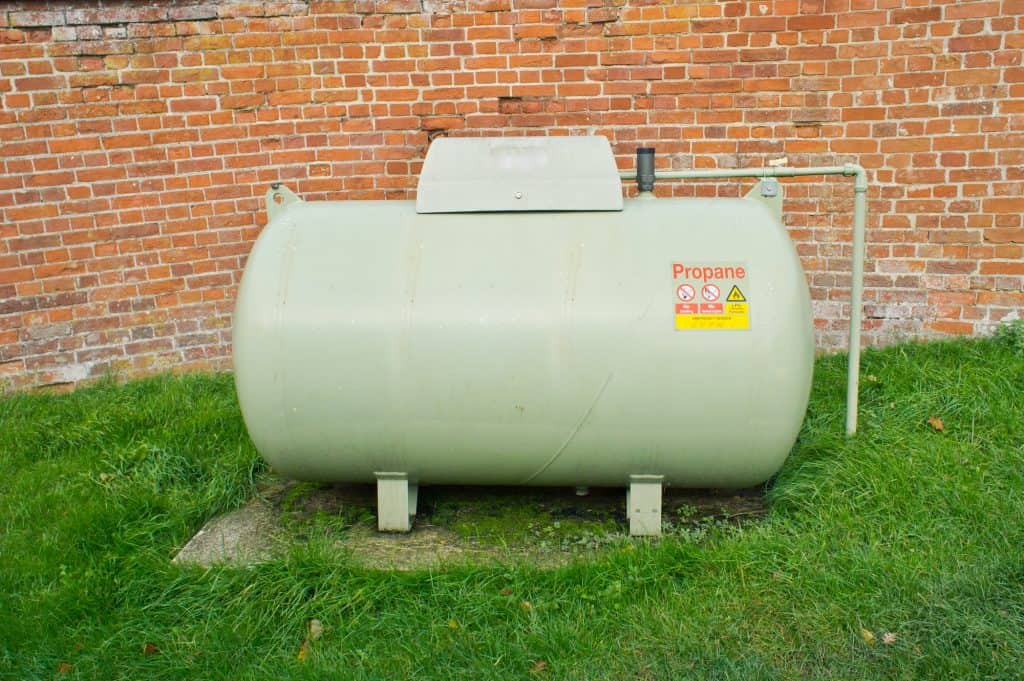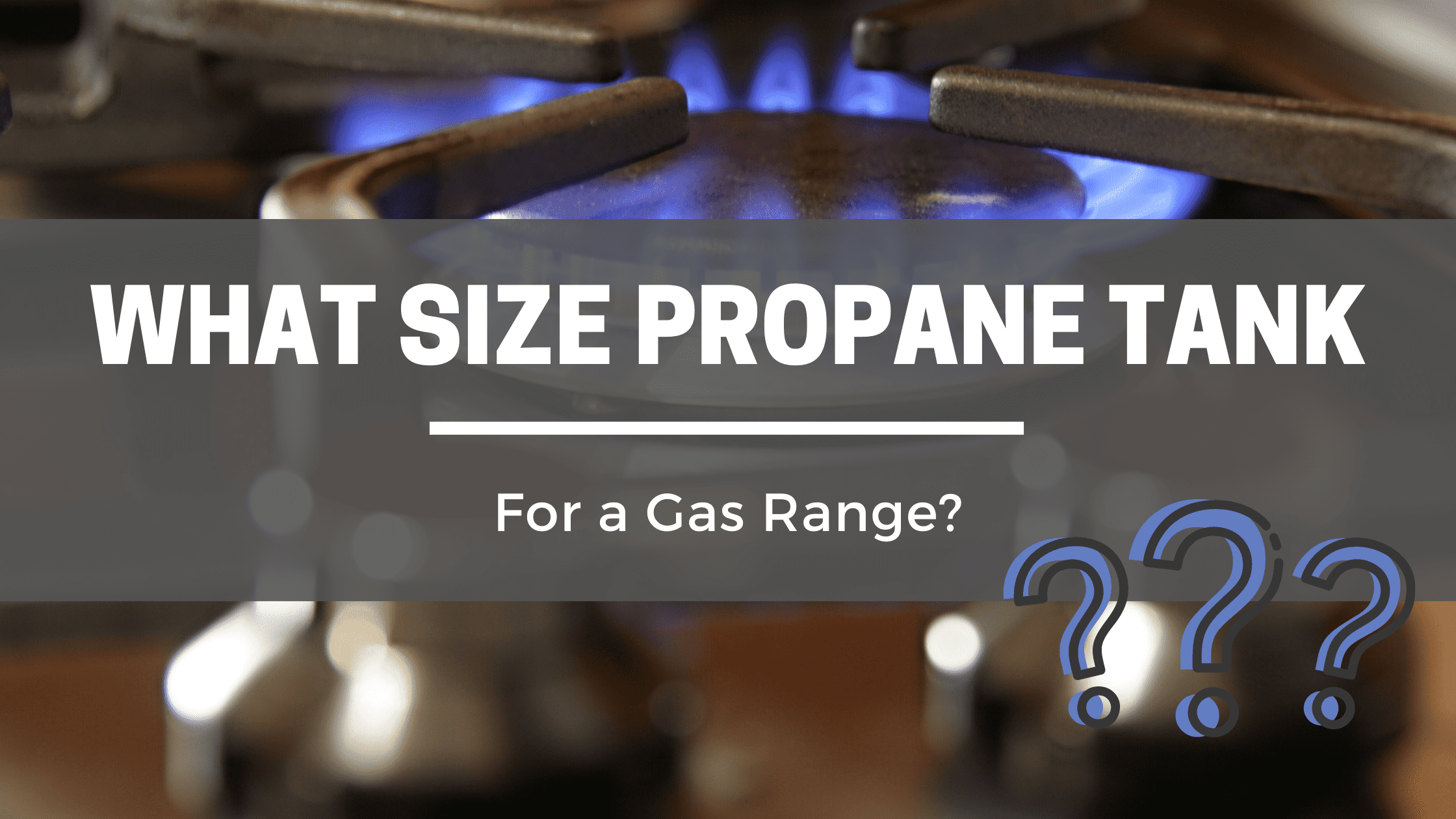Choosing the right propane tank for a gas range can sometimes get tricky because there are so many factors to consider, not to mention the multitude of tank sizes to choose from. The most challenging part of it is matching the propane tank size to your gas range’s consumption. You don’t want a tank that’s too small that you’ll be refilling too frequently, and neither do you want to overspend on an unnecessarily large tank.
You need 100-lb. (45.4 kg) propane DOT tank for a gas range that’s meant for cooking and nothing else. This tank is suitable for small to medium-sized families. 420 lb. (190.5 kg) tanks may be better suited to larger families, particularly if they also need to support other appliances.
Read on for details on propane tank sizes, typical gas range consumption, and how to calculate your specific gas needs to choose the right tank size for your home.
Propane Tank Sizes vs. Gas Range Propane Consumption
The most critical part of determining the propane tank you need for a gas range is knowing the various tank sizes available and how much gas they hold. Then, you can use this information to select the perfect match for your gas range based on its propane consumption.
To help make the right choice, I’ll do both (i.e., review the available tank sizes and then calculate how much gas ranges consume).
Let’s tackle tank sizes first.
Propane Tank Sizes
The trickiest part about propane tank sizes is that they can be listed by either weight or volume. Whether a tank is listed by weight or volume depends on whether it’s a DOT or ASME. Generally, ASME tanks are referred to by volume, whereas their DOT counterparts are denoted by weight.
What do I mean by DOT and ASME tanks?
DOT and ASME are abbreviations for the Department of Transportation and the American Society of Mechanical Engineers, respectively. A DOT propane Tank is designed per the Department of Transportation standards, whereas its ASME counterpart’s design standards are regulated by the American Society of Engineers’ regulations.
Generally, ASME tanks are meant for stationary installations, while their DOT counterparts are designed with portability in mind. There are other differences between the two, but let’s only focus on the sizes.
DOT tanks come in 5 sizes of 1 lb. (0.5 kg), 20 lb. (9.1kg), 33 lb. (15 kg), 100 lb. (45.4 kg), and 420 lb. (190.5 kg).
ASME tanks, on the other hand, come in three sizes of 100-gal (378.5 L), 500-gal (1892.7 L), and 1000-gal (3785.4 L).
Note that propane tanks are never filled to their maximum capacity. Instead, they come 80% full to accommodate the expansion of propane when temperatures change. So when you see a tank with a capacity of 500 gallons (1892.7 L), it means there are 400 gallons (1514.2 L) of liquid propane inside.
Quick Tip: To determine how much propane is contained in a DOT tank, use this formula:
- 0.236 gallons or 0.89 L = 1 pound (0.5 kg) of propane when the tank is at 60°F (15.6°C)
For instance, a 100 lb. (45.4 kg) tank contains 23.6 gallons or 89.3 L (0.236 x 100 = 23.6) of liquid propane at the above temperature. If you factor in the weight of the cylinder, the tank weight rises to 170 lb. (77 kg).

Gas Range Propane Consumption
The second part of determining the size of the propane tank you need is estimating how much your gas range consumes in a year.
On average, a gas range consumes about 35 gallons (132.5 liters) of propane in a year. However, this figure may vary with usage, which is mostly dictated by the size of your family.
You can calculate the consumption of your burners and use that value to estimate the total gas utilization of your entire range. To do that, you’ll need to find your unit’s British Thermal Unit (BTU). This figure is usually indicated in your range’s manual, so finding it shouldn’t be an issue.
The BTU indicates the gas energy consumption of each of your range’s burners; and not the propane’s heat output. And while it’s indicated as “BTU,” it actually refers to BTUs per hour.
A gas range may have several burners with varying BTU capacities. For instance, a particular unit with 4 burners may have two 9,000 BTU (9,495,503 J) burners, one 12,000 BTU (12,660,670 J) burner, and a 5,000 BTU (5,275,279 J) burner.
To determine your unit’s total propane consumption, you’ll need to figure out how much gas each burner uses per hour. Then, you can use that value to estimate how much propane the unit will consume in a given period based on how often you use the various burners on your range.
Determining the propane consumption for a burner is pretty simple when you know it’s BTU (again, it’ll be indicated on the user manual). Here’s the only formula you’ll need:
- One gallon (3.8 L) of Liquid propane = 91,500 BTUs (96,537,611 J)
If we know how much energy a gallon of propane produces, how will that help calculate how much gas you need? The answer is:
- Divide 91,500 by your burner’s hourly BTU rating. The result is the amount of time the burner would burn on a gallon (3.8 L) of propane.
For instance, a 5,000 BTU (5,275,279 J) burner would burn for 18.3 hours (91,500/5,000) on a gallon (3.8 L) of propane. If your unit has two such burners, a gallon (3.8 L) of propane may last half that time if both burners were used simultaneously.
How To Determine the Propane Tank Size for Your Gas Range
After all the calculations, it’s time to estimate the ideal size of propane tank for your gas range.
For simplicity purposes, let’s assume your gas range has two 5,000 BTU (5,275,279 J) burners that can burn simultaneously for 9.15 hours on a gallon (3.8 L) of propane. Let’s also assume that you spend roughly half an hour cooking per day: that’s just about the time the average American spends cooking every day.
If you use these two burners simultaneously to cook for about half an hour every day, one gallon (3.8 L) of propane will last you 18.3 days. This would likely be longer since it’s not every day you’re going to use those two burners simultaneously. But since it’s better to overestimate your gas needs than underestimate them, let’s stick with 18 days.
So, now we know a gallon (3.8 L) will last about 18 days.
If you choose a 100 lb. (45.4 kg) tank, it’ll come with about 23.6 gallons (89.3 L) of propane (remember, 0.236 gallons or 0.89 L = 1 pound or 0.45 kg of propane when the tank is at 60°F or15.6°C).
That means a 100 lb. (45.4 kg) tank can have your gas range last 424.8 days (18×23.6), which is well over a year without a refill.
The takeaway?
A 100 lb. (45.4 kg) propane tank is enough for most gas ranges.
Even if your range has more than two burners with a higher BTU than 5,000 (which is what we’ve used for calculations), you’ll still go about a year without a refill. Worst case scenario, you’ll need a refill once a year, which isn’t too bad.
Your gas needs will come down to your family size and usage. If your gas range serves a relatively large family and has burners on the higher end on the BTU scale, it might be worth considering a 420 lb. (190.5 kg) tank. This size is especially ideal if you also need your propane to support other functions, such as an indoor fireplace.
But if you’re in the normal range in terms of family size and only use your tank for a gas range, a 100-pound (45.4 kg) tank will do just fine.
Summing Up
As a homeowner, you don’t need an ASME tank if you’re looking for something to support everyday activities such as cooking. Instead, you want to be shopping in the DOT tank category.
A 100-pound (45.4 kg) tank will suffice for small-to-medium-sized families, while large families may need a 420-pounder (190.5 kg). Ultimately, your choice comes down to your budget, usage, and how often you want to be refilling your tank.
Sources
- Appliance Analysts: Home Propane Tank Sizes: Find Out What Tank Size You Need!
- AmeriGas: Tanks 101: Propane Tank Sizes
- RP Gas Piping: What propane tank size do I need for my home?
- Kauffman Gas: Residential Propane Tanks: How to Figure Out What Size Propane Tank You Need for Your Home
- Propane Depot: How Much Propane Common Appliances Use
- Propane Tank Store: DOT & ASME Propane Tank Differences
- Hunker: How Much Propane Does a Range Use?
- U.S. Department of Transportation: home page
- The American Society of Mechanical Engineers: home page
- Wikipedia: British thermal unit
- U.S. Department of Agriculture Economic Research Service: Americans Spend an Average of 37 Minutes a Day Preparing and Serving Food and Cleaning Up

